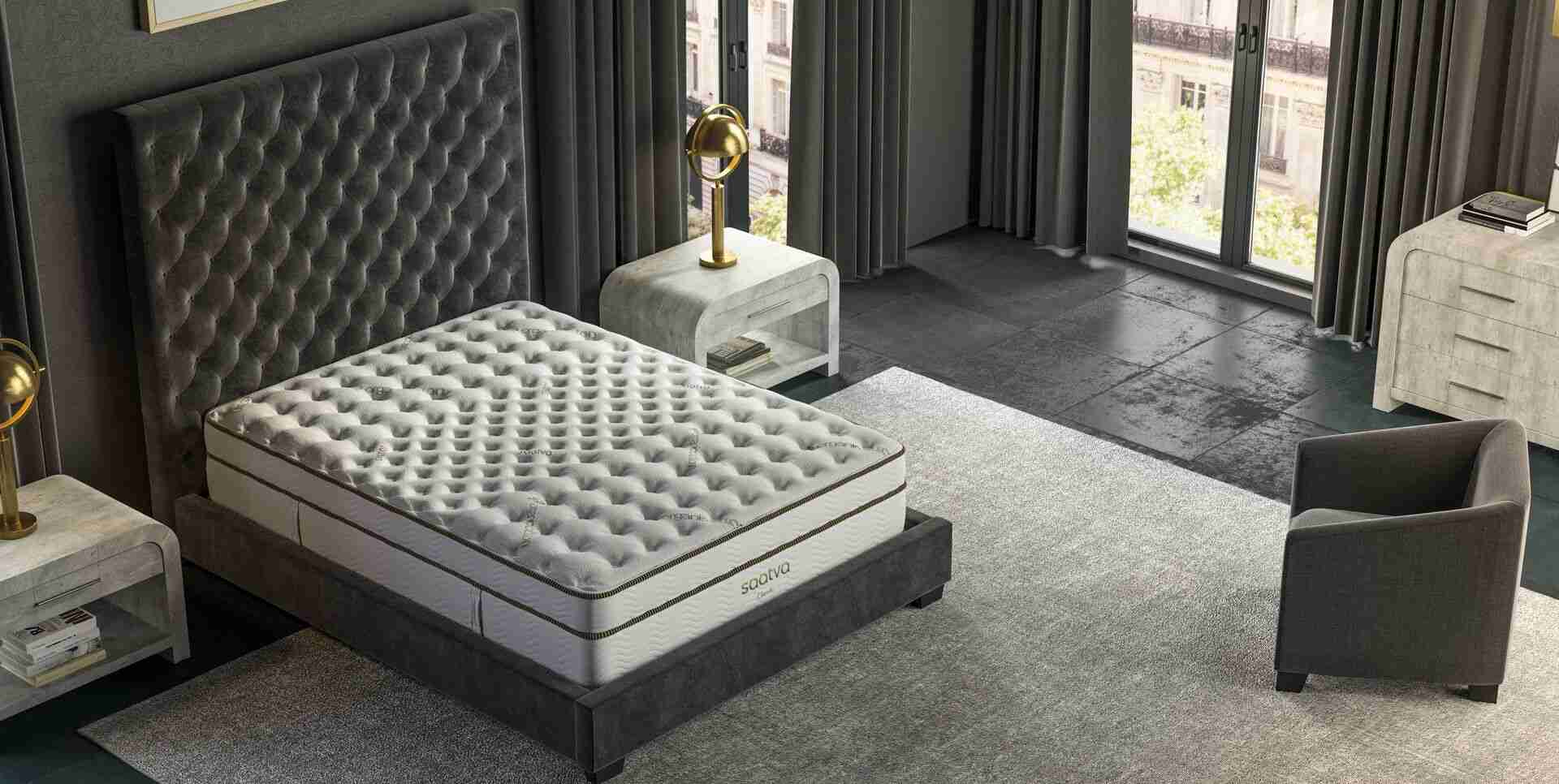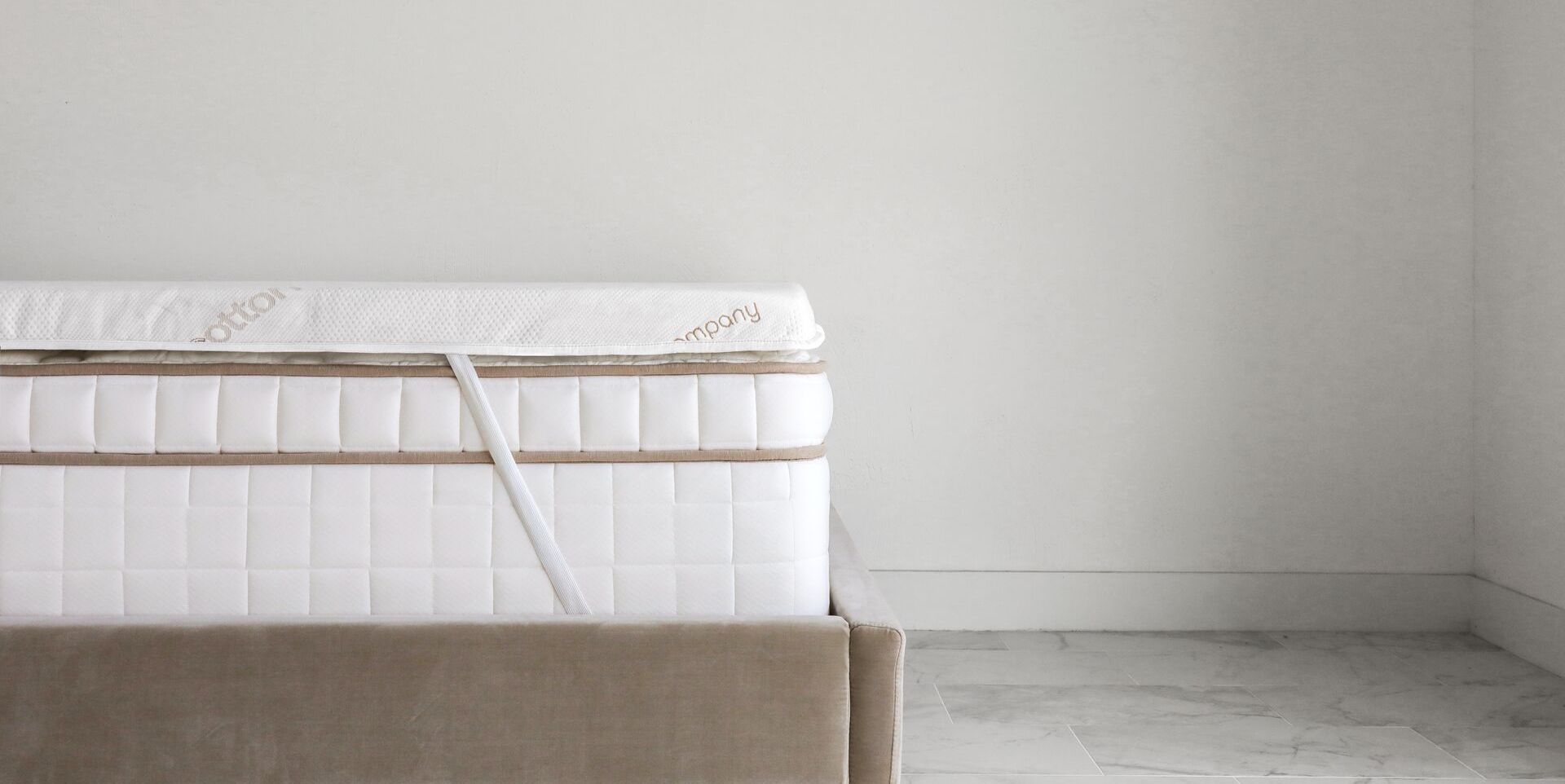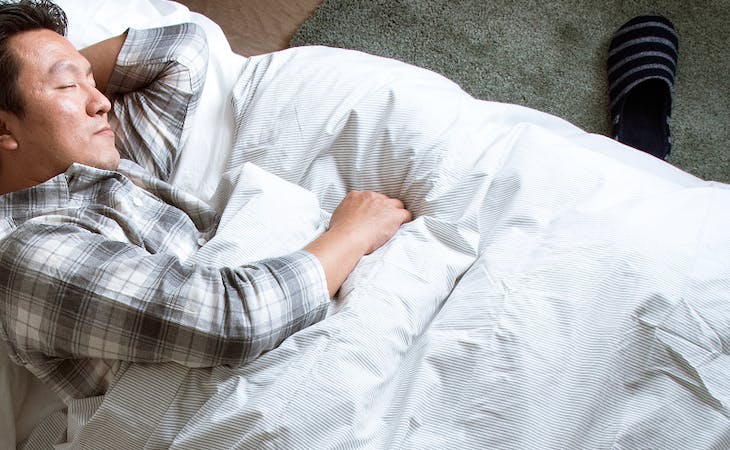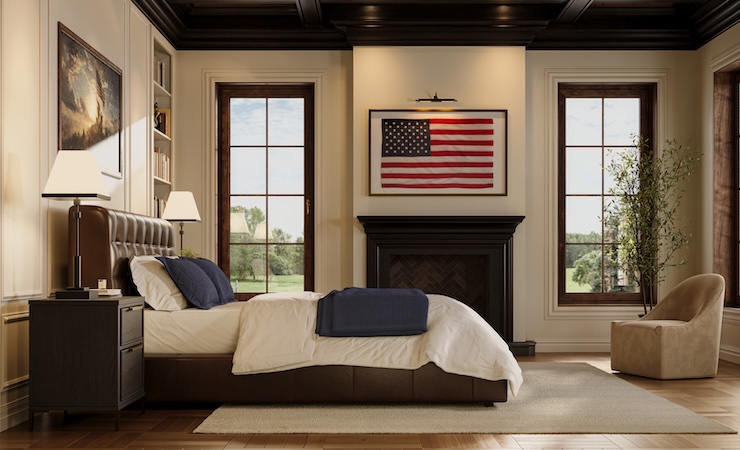More than half of all adults are side sleepers, according to the National Sleep Foundation (NSF). If you’re among them, you’ll be glad to know that it’s one of the best sleeping positions for your health.
However, side sleepers are often prone to shoulder pain, hip pain, and lower back pain if they don’t get the right amount of support from their mattress. If you’re a side sleeper in the market for a new mattress, use this guide to find the right mattress for you.
Benefits of being a side sleeper
Sleeping on your side can help reduce symptoms of acid reflux, prevent back and neck pain, and even help your digestion. It’s also a great position for snorers and people with sleep apnea because it helps keep your airways open. Some medical professionals even think side sleeping can lead to improved brain function and help prevent the onset of neurological issues.
But sleeping on your side on the wrong mattress can cause problems of its own, like sore joints and body aches.
A good mattress for side sleeping should conform to your body, taking the pressure off your hips and shoulders and aligning your spine so that your muscles can relax,” says Joe Auer, editor of the mattress review site Mattress Clarity.
While no one mattress is best for any particular kind of sleeper (though we recommend choosing a mattress that works with your sleep position), certain materials and features can make side sleepers more comfortable. (Find out if left vs. right side sleeping is better for you.)
Side sleepers: what to look for in a mattress
If you’re a side sleeper, here are some things to keep in mind as you shop.
Watch this video for more advice on choosing the best mattress for side sleepers:
Pressure relief
More so than back sleepers and stomach sleepers, side sleepers have a lot of pressure on their hips, shoulders, and neck, which in turn leads to pressure on the spine. That combination can trigger back pain and other body aches along those pressure points.
A mattress that’s too firm can cause aches and pains because it doesn’t contour to the widest points in the hips and shoulders. A too-hard mattress can also cut off circulation to those areas, leading to numbness or tingling.
The best mattress for side sleepers is soft enough to cradle a side sleeper’s hips and shoulders while also supporting the spine in a neutral position.
Spinal alignment
While you want softness to cushion your hips and shoulders, a too-soft bed isn’t good for side sleepers either. In that scenario, you could sink into the surface of the mattress too far and throw off your spine’s natural alignment, leading to back and neck pain.
A “neutral” position is one that maintains a straight line from your head and neck down your spine. A mattress that’s too hard won’t properly support your neck—and if it’s too soft, your spine will be unnaturally curved.
The perfect mattress types and firmness levels for side sleepers
The best mattress type and firmness level for you ultimately comes down to personal preference. Keep in mind, however, that matching your sleeping style to your mattress can help prevent body aches and pains, posture issues, and even help mitigate chronic back pain down the line.
So which type of mattresses and mattress firmness levels are best for side sleepers? Here’s what you need to know.
The best mattress types for side sleepers
Memory foam, latex, hybrid: Which one is right for you? We’re breaking down each mattress type and explaining why it could be a good fit for you.
Memory foam mattresses
Because of its contouring ability, memory foam “hugs” your curves and evenly distributes your body weight across the surface, giving you incredible pressure relief and lumbar support. Memory foam also offers great motion isolation, making it an ideal option for couples.
Latex mattresses
Top-quality latex mattresses provide a nice level of give” while still offering the desired support. Latex keeps its shape well, which helps prevent indents for side sleepers when you lie in the same spot every night.
Latex mattresses conform to every curve of the body, providing greater pressure relief and leading to improved circulation and blood flow. That means you’re less likely to wake up with that pins and needles feeling. Latex mattresses are also cooling mattresses, meaning that they don’t trap body heat and increase airflow, making them an excellent choice for hot sleepers.

Traditional innerspring mattresses
If you’re looking at innerspring mattresses, make sure the top comfort layer is cushioned enough to let your hips and shoulders sink in a bit or choose a hybrid style, like Saatva’s

America’s best-selling online luxury innerspring
, that combines springs and memory foam.
Hybrid mattresses
A hybrid mattress combines a base layer of individually wrapped coils with top layers of memory foam or latex. Some hybrid mattresses have extra layers made of gel memory foam or polyfoam for added comfort and support.
Hybrid mattresses offer the perfect mix of pressure-relieving comfort and support, so side sleepers can sink into the mattress at their shoulders and hips but still get enough spinal support.
The best mattress firmness levels for side sleepers
Along with mattress type, mattress firmness level is also an important consideration for side sleepers. Mattress firmness is a subjective measurement, dependent largely on your personal preference, body type, and body weight.

Each brand typically rates its mattresses on some sort of firmness scale, which is usually a number between 1 and 10. Softer mattresses are rated lower, and firmer mattresses are rated higher.
Side sleepers usually fair well with mattresses of medium firmness. Typically, side sleepers under 130 pounds find that medium-soft mattresses provide just the right amount of cushioning and support. Side sleepers over 130 pounds are usually a perfect fit for medium-firm mattresses
Mattress toppers for side sleepers
If you want to improve your sleeping situation without having to replace your mattress, a

Body-hugging comfort with advanced cooling technology
can be an effective and affordable option.
A memory foam, polyfoam, or latex mattress topper can act as another support layer on your mattress, giving a softer mattress a firmer, more supportive feel.
The best pillows for side sleepers
Even on the perfect side-sleeper mattress, you may need to improve your position. A better pillow can help. The NSF recommends choosing one that makes it easy to keep your head in a neutral position so that it rests in line with your shoulders and doesn’t tilt too far back or forward.
For side sleepers, that usually means a firm, high-quality pillow that will fill the gap between your ear and shoulder. If you have back pain, try sleeping with another small pillow between your knees to further align your spine.
FAQs
What mattress types are best for side sleepers?
Memory foam, latex, and hybrid mattresses are best for side sleepers as they provide pressure-relieving comfort and can conform to your body.
Do side sleepers need a firm or soft mattress?
Side sleepers need a mattress of medium firmness so it’s soft enough to cradle their hips and shoulders while still providing spinal support.
Are foam mattresses better for side sleepers?
Foam mattresses are a great option for side sleepers as they “hug” curves and evenly distribute body weight across the surface. This provides incredible pressure relief and lumbar support. Foam mattresses are also great for motion isolation.
Find the best mattress for you
Whatever mattress you choose, take it for a test run. Our mattresses come in a variety of firmnesses to suit every sleep style, including side sleeping.
Try a new Saatva mattress for 365 nights to see if one of our mattresses is right for you. If you decide your initial selection isn’t right for you, you have the option to exchange your mattress for another mattress firmness or mattress type during the trial period.






